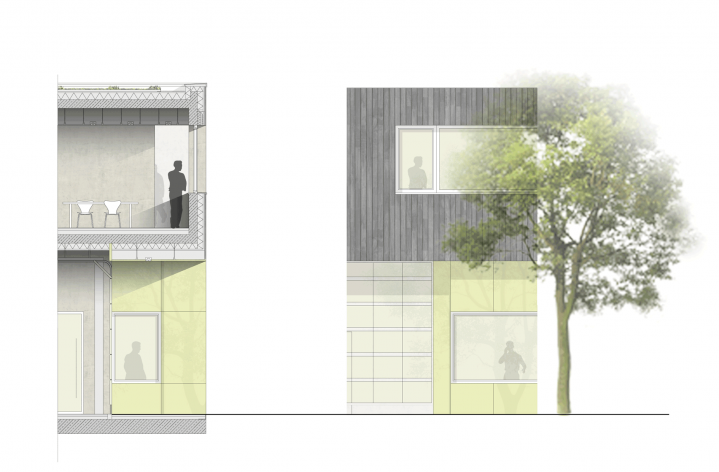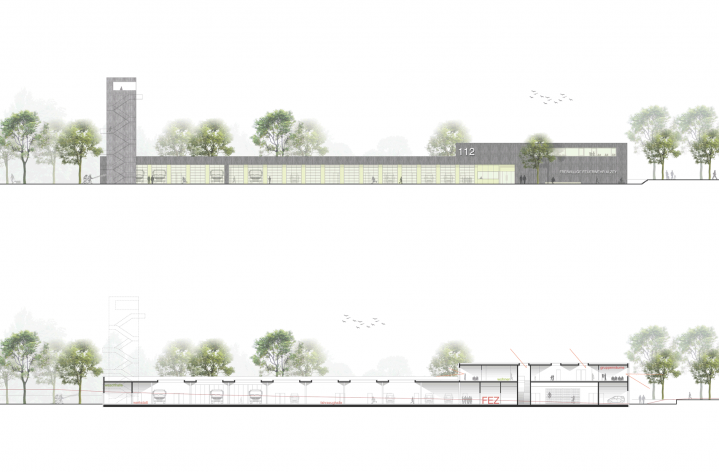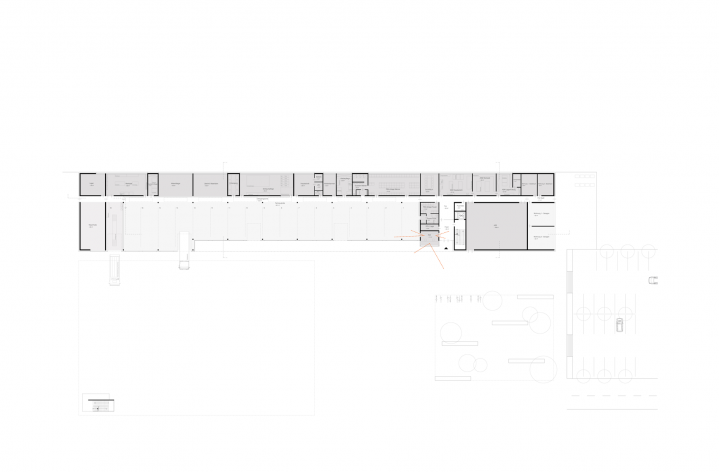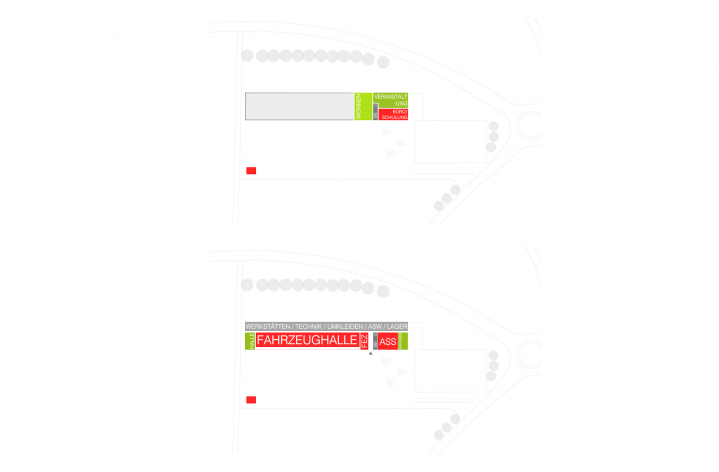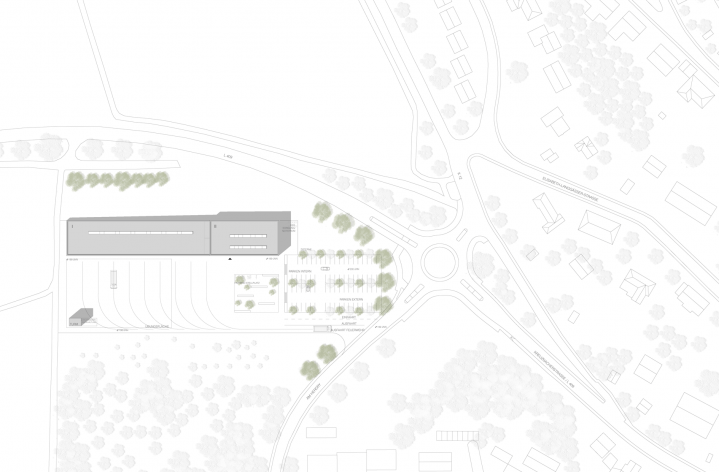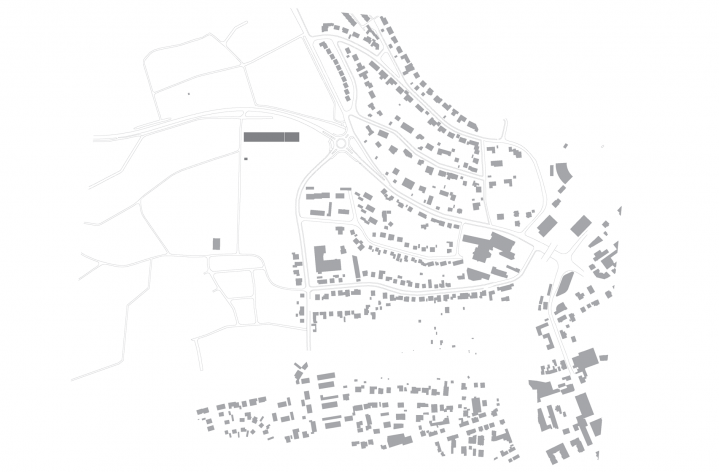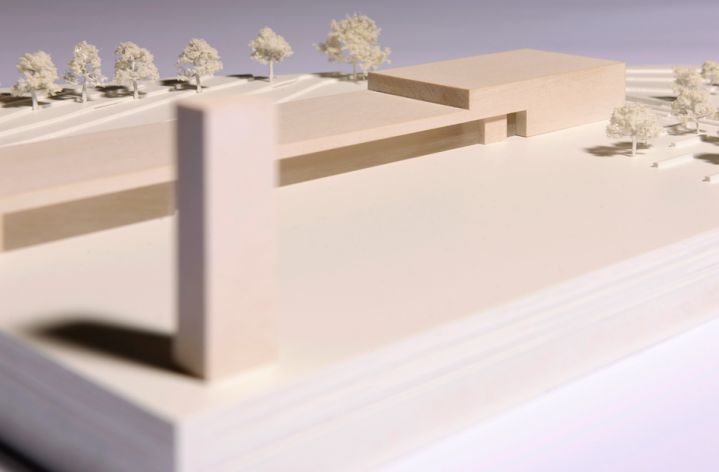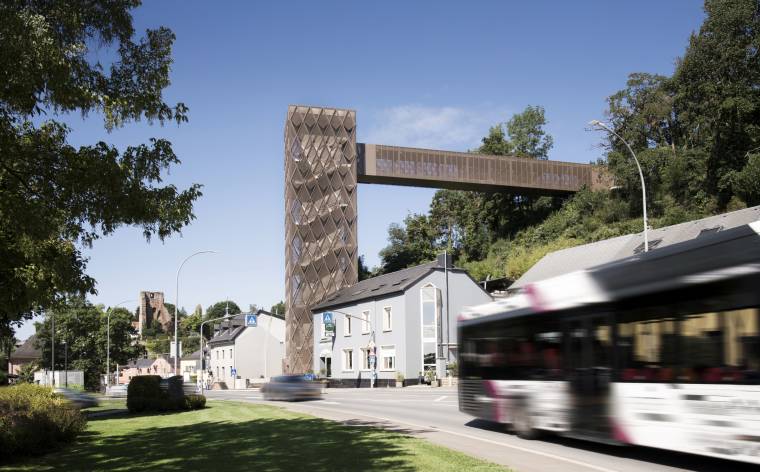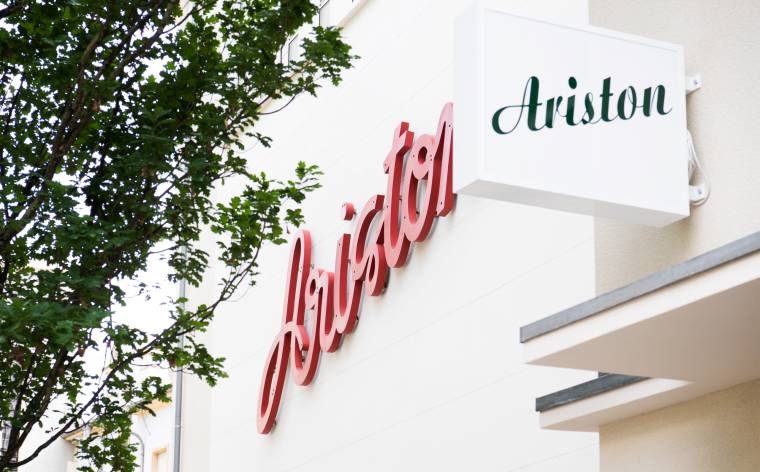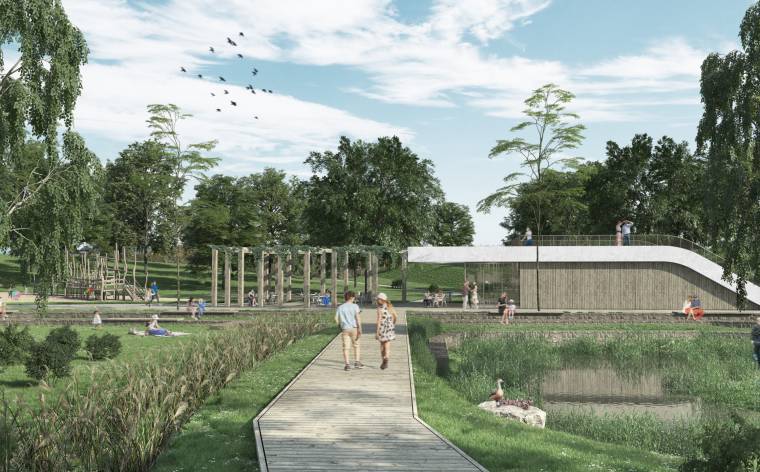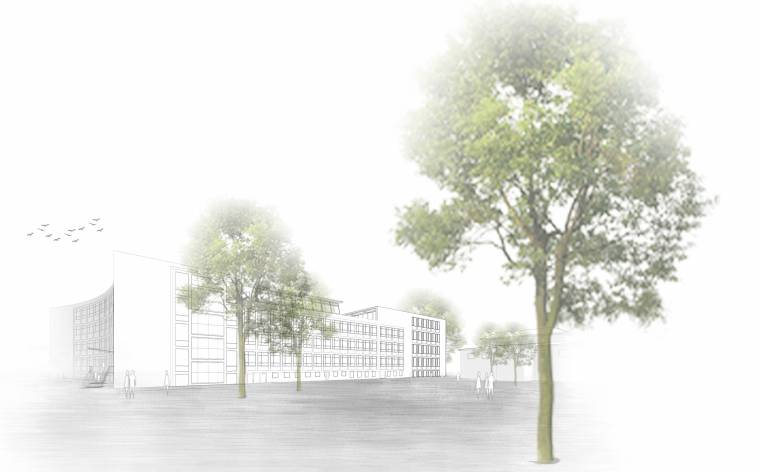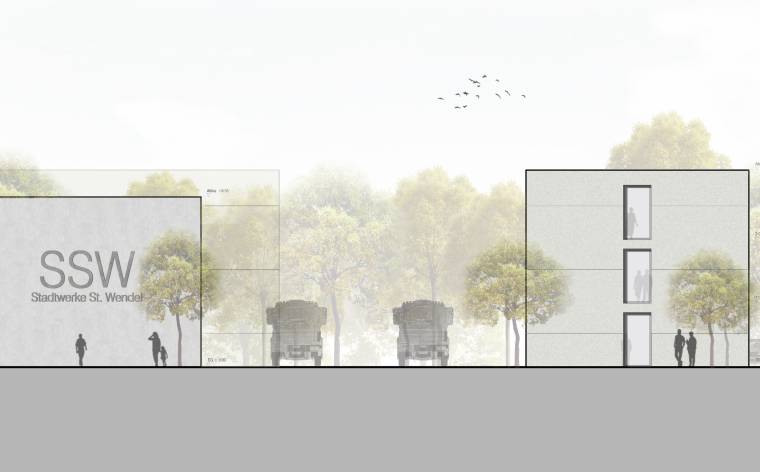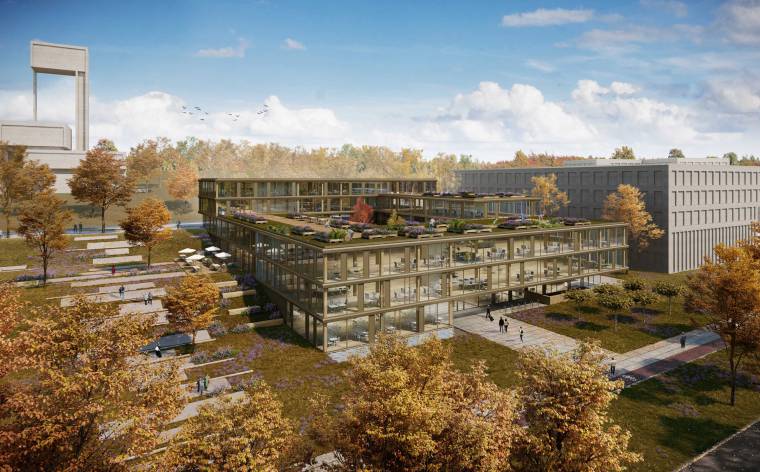Category :
Special buildings
Project :
New construction of a fire station
Client :
Stadt Alzey
Country :
Germany
Area :
gfa 3.349 m²
Planning period :
09/2014 - 11/2014
Award :
2nd. prize
Share on
project New construction of a fire station awarding authority City Alzey (GER) team WW+, Esch-sur Alzette/Trier (LUX/GER) rendering Stube 13, Zurich (CH) gfa 3.349 m² ufa 2.477 m² gv 18.915 m³ total area 1,8 ha net construction costs 7.000.000 € competition phase 09/2014 - 11/2014 professional services contract regulations 2nd prize
“Good architecture lives off tension, harmony and appropriate modesty. It should radiate a breath of implicitness and always be guided by the essence of man.” Norman Heibrodt
The unique geography of the building site and its functional and recognisable use characterise the overall sculptural and typological structure of the planned fire station. The architectural concept, the staging of the individual functional units and the design of the outdoor facilities all systematically descend from the existing natural environment and the building’s use.
Design Concept
The distinctiveness of the site at the city entrance of Alzey on the fringes of an open garden-city residential area and neighbouring the Hochzeitswald to the south provides only limited urban planning specifications. The architectonic concept foresees a compact building form, in a bid to reduce the built-up surfaces in favour of a green setting, and places particular importance on a harmonious integration into the surrounding natural environment. Given its distinctive form, the building forms a clear, identityestablishing conclusion to the L409, with its basement blending into the existing topography and its distinctive volume being visible over a long distance – a true landmark. The result is a design that provides visitors with a clearly defined structure and the city of Alzey with a distinctive entrance marking the transition from landscape to urban area. At the same time, openness and transparency are achieved through the targeted use of materials, light and openings.
Access
The main entrance is defined by a generous forecourt on the south side of the building. From there, the ground-floor operations centre is reached, which given its representative character becomes the central meeting point of the fire station and at the same time represents an important point of intersection, from which all the other parts of the building can be reached. To encourage synergies between the individual building parts, access to the upper floor is foreseen via a stairwell with lift. The combined communal functional area with music rehearsal room and two accommodation quarters, as well as the fire brigade training area, connect directly to the stairwell. The multifunctional public meeting room is also accessed from here. The connection to Kreisstraße 12 allows motorised traffic to directly access the newly planned parking area, which borders the east of the building design. To ensure short distances in the event of an emergency, 25 parking places with direct access to the fire station have been allocated for the volunteer fire brigade. There is also an additional emergency lane planned for the entry and exit area.
Functional solution
The design of the fire station as a one-storey and in part two-storey building automatically creates individual main function areas. The building’s two-storey head features a ground floor with the operations area including locker room/sanitary facilities, radio/telecommunications room, common room and uniform store, as well as the respiratory protection workshop with delivery, workroom and operations area. Adjoining this are the auxiliary municipal function rooms. Additional municipal use areas (multifunctional meeting room with kitchenette, music rehearsal room, two accommodation quarters for fire brigade members and caretaker) are located alongside the educational and training module on the upper floor and connected to the ground floor via a staircase and a lift. The one-storey building part houses as a further main function the engine room including workrooms and a public washing bay, accessible via the central courtyard. In addition to providing various entrances to the building’s main modules, this area with corresponding exercise tower serves as the fire brigade exercise area. The individual rooms are supplied with daylight via large-scale windows boasting outside views and via skylights, resulting in a bright and friendly atmosphere in all the rooms.
The educational and training area, which also looks out onto the central forecourt via generous windows, can be used outside regular opening hours and as such forms an important focal point for the neighbouring urban areas. The result is a functional network between the fire station and the residential quarters nearby.
Economic efficiency and sustainability
The starting point of the energy concept is an optimised architectural concept, which is tailored to the use of existing and natural resources as well as to optimised operational and maintenance costs. The combination of sustainable construction methods (excellent façade surface to building volume ratio, balanced façade ratio of transparent and non-transparent surfaces, etc.) and efficient energy use achieves a comprehensive concept for the fire station. Systematic space organisation, a high degree of structural compactness and optimised thermal insulation provide the perfect platform for this. The main access to the new construction is reached via a thermally effective vestibule. The upper floor is reached via a staircase, which is located in the central entrance area of the ground floor so as to ensure short distances within the building. All the common rooms enjoy an outdoor view thanks to generous windows and benefit from daylight resulting in a light and friendly atmosphere in all the rooms. Achieving the best natural lighting and ventilation possible furthermore reduces energy consumption. In conjunction with efficient building services and renewable energy sources together with the recovery of existing energies, a building is created that guarantees a high level of user comfort and will continue to meet and even surpass the current energy saving regulations, in particular in terms of primary energy requirements. With the objective of an optimised planning in terms of investment and operation costs of the energy generation installations, great importance is placed on low emissions through conceptual and operational optimisation. As a central generation installation, a geothermal heat pump is installed in combination with a photovoltaic installation on the roof. The heat supply is provided exclusively via the heat pump, which during winter is partially supported by low temperature potentials from the collectors. During the summer, the hot water supply is provided exclusively via the collectors and any existing surplus potentials can be put back into storage to regenerate the soil.
Construction and materials
The load-bearing components of the fire station are made of reinforced concrete. These reinforced concrete walls and reinforced concrete pillars are the support of the frame transom. The ceilings with normal wingspan are also made of reinforced concrete. The foundation of the building consists of a bedded floor slab with integrated strip foundations, which also act as an ice wall. The massive concrete cubature featuring mineral wool thermal insulation is clad with natural finished dark timber in the form of a curtain-wall and rear-ventilated wooden strip facing. Wood was chosen due to its adaptation to the environment. The interior is characterised by a scaling down to just a few materials. Overall, the harder materials of glass/profiled glass, concrete and white-plastered walls dominate. The common rooms, i.e. the areas that see increased use both inside and outside, also feature wood as a soft element, which produces a friendly warm work and social environment and creates a link to the façade. In keeping with the comprehensive energy concept, robust, durable and sustainable materials have consciously been chosen, given that they are easy to care for and maintain their appearance over a long period of time.
Jury session excerpt
“The work outlines a clearly contoured, elongated building structure in an east-west direction, which subtly blends into the existing landscape. (…) Overall a very moderate height difference is achieved, which sensitively interacts with the existing topography and returns the northern part towards the L 409 back to the landscape.
(…)
The spatial organisation of the fire station on one level is a perfect solution, with a logical functional allocation. The location of the fire station’s operations room has been solved well in the intersection between entrance and engine room, so that in the event of an emergency a good overview of the external areas is also achieved. Additional municipal functions and accommodation quarters are housed self-evidently and economically on the upper floor of the building head. The façade structure is clearly formulated and derived from the building’s functionality. Despite this, an appropriately modern and exciting visual appearance has been achieved. The wooden batten façade blends into the colourfulness of the surrounding landscape.
(…)
Overall the work represents a both self-assured and restrained contribution, which confidently solves the assigned task and, from a structural point of view, blends into the existing situation perfectly.”
- Feuerwehr Alzey eng
- fire Department Alzey ger
Downloads
Contact us !
